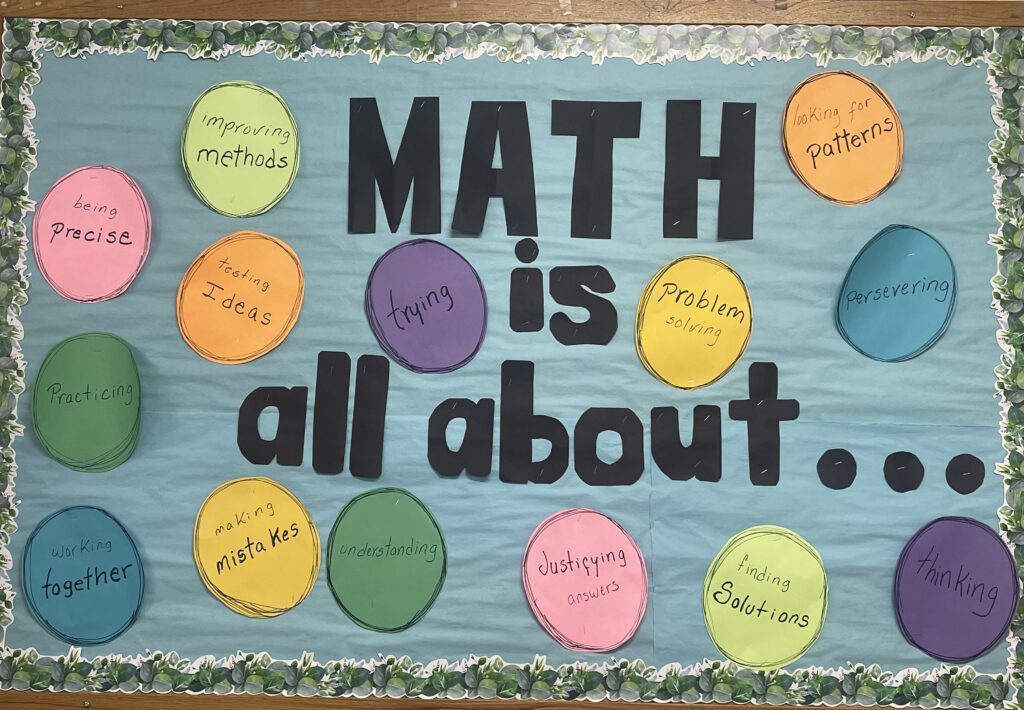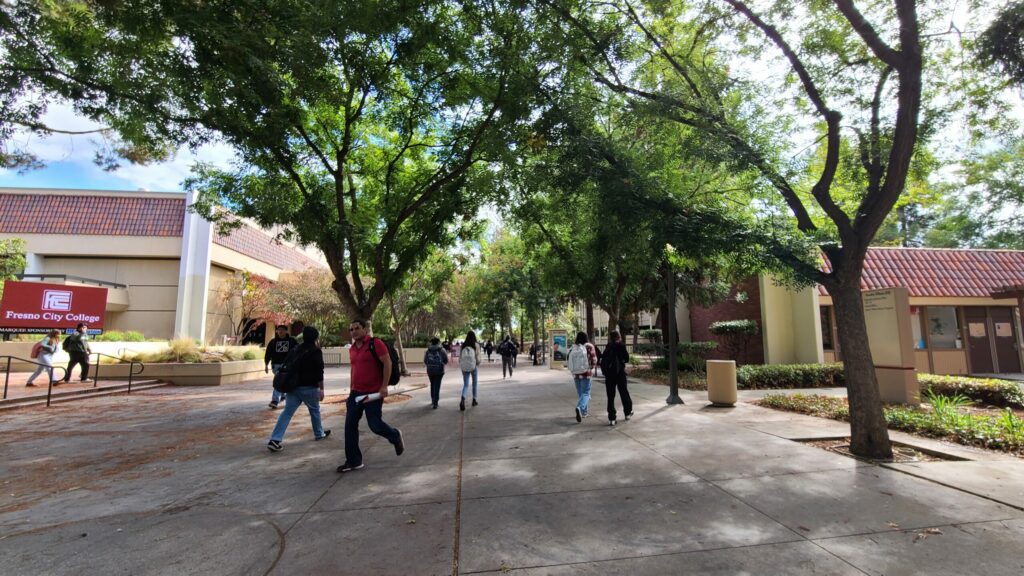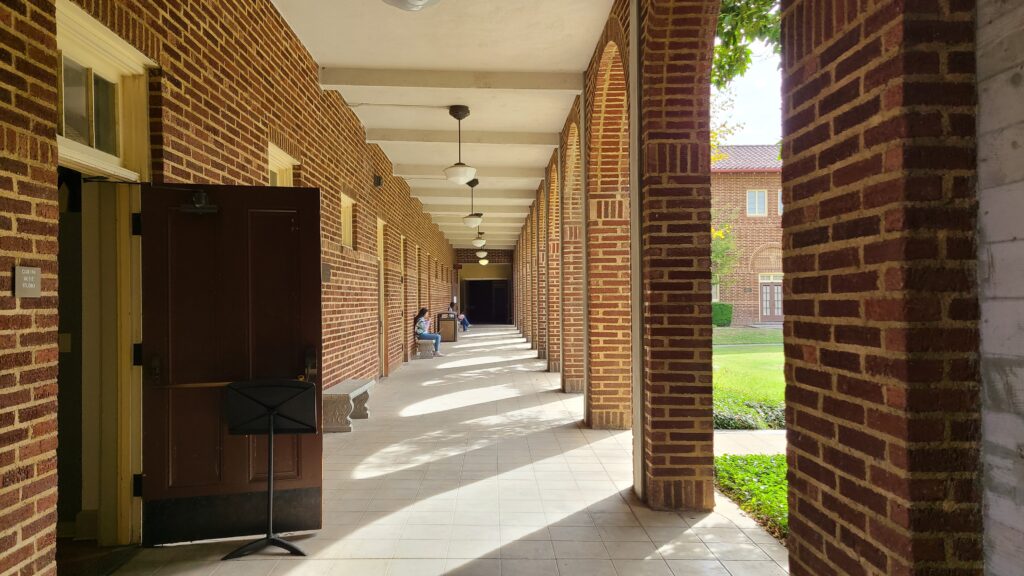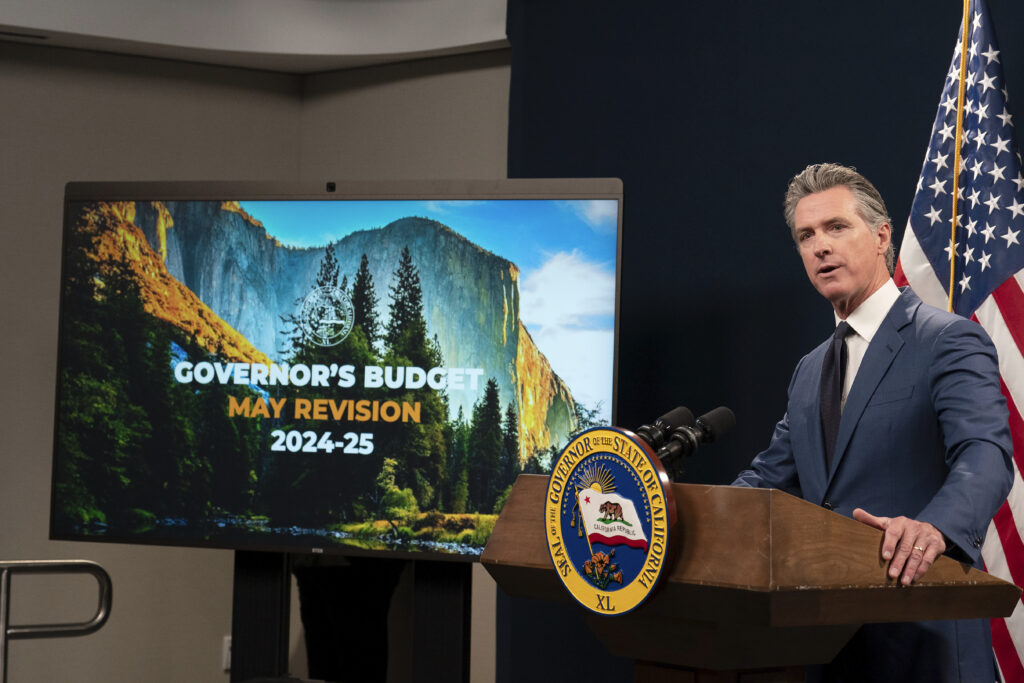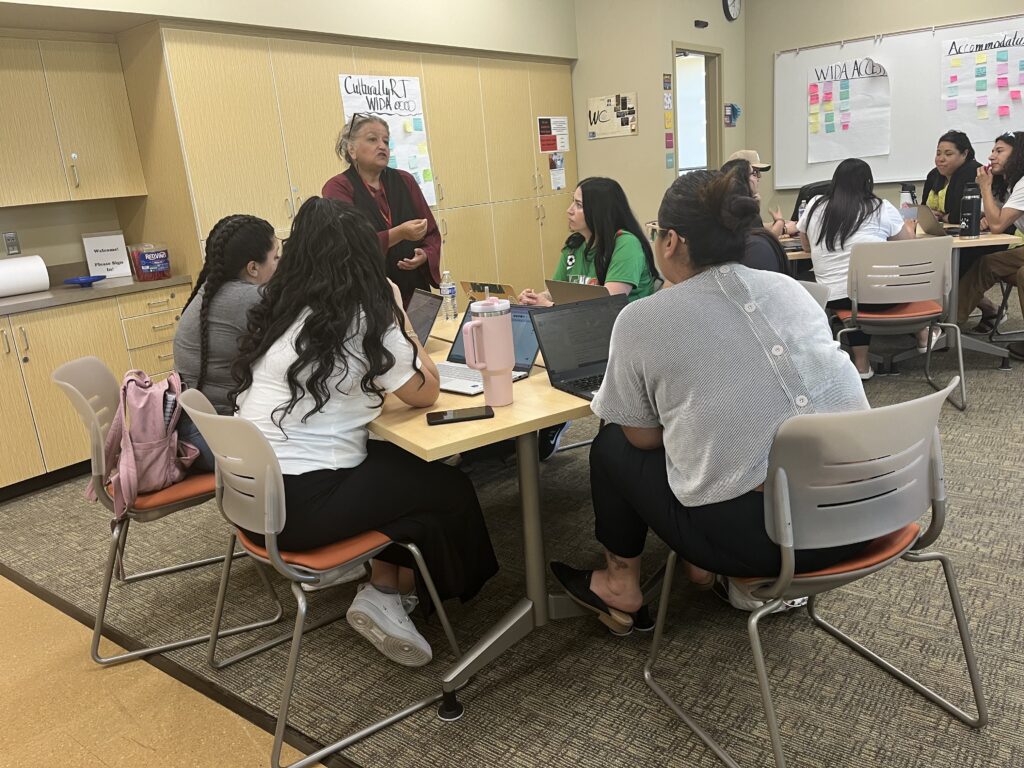
Joanne Scott, left, practices pharmaceutical compounding, part of Mt. San Antonio College’s short-term vocational pharmaceutical technician program.
Michael Burke/EdSource
Top Takeaways
- Short-term vocational certificates, especially those in health fields, are growing across community colleges.
- At Mt. San Antonio College, 83% of students complete the programs on their first try.
- Officials see vocational training as a way to recover enrollments, which dropped sharply during the pandemic.
Joanne Scott had been without full-time work for about two decades and was struggling to reenter the workforce. Then she learned this year about a short-term pharmacy technician program at Mt. San Antonio College in eastern Los Angeles County.
Scott, 45, is a stand-up comedian who performs about twice a week in Los Angeles, usually at The Elysian Theater in the city’s Frogtown neighborhood, but was looking for a more consistent paycheck. She and her husband have twin 11-year-old boys, and Scott wanted to contribute more.
“Obviously, being a performer is not steady,” she said.
Scott thought something in the medical field would be promising because of the high demand in the job market. She landed on the pharmaceutical program in part because it fit her schedule. The noncredit program is just 20 weeks long, and classes are during the day, allowing Scott to still perform comedy in the evenings. Students who get their certificate often enter the workforce right away as a pharmaceutical technician, either at a retail location like Walgreens or within a hospital.
The program is one of 48 short-term vocational programs that Mt. San Antonio has added in the past five years as part of an effort to serve more adults and prepare them for the workforce. Most of the new programs are in health fields, but the college has also added programs in areas such as tax accounting, welding and appliance repair.
It’s reflective of a growing trend across the state’s community colleges to target more programs at adult students who, because they often work or have family to support, have less time for school than traditional-aged students do. College officials say that enrolling those adults is one way to reverse steep pandemic declines across all populations.
Serving large portions of the San Gabriel Valley and Inland Empire, Mt. San Antonio has prioritized noncredit vocational programs because many adults in the region are interested in upskilling or finding new careers, said Martha Garcia, the college’s president and CEO.
“If we look at trends for our traditional students, 18 to 24, that population is decreasing,” Garcia said. “I’ve analyzed our demographics, and if I want to impact this community at the greatest level that I can, I need to focus on serving adult learners, because that’s where we have the greatest level of need.”
The number of adult learners in the community college system took a massive hit during the pandemic: Head counts for students age 35 and older declined by about 25% between 2019 and 2021, an even higher rate than students in the 18 to 24 age range.
Those enrollments have, however, been steadily recovering in recent years, especially among students aged 35 to 44, who are now enrolled near their pre-pandemic levels.
One of the reasons for that is the expansion of short-term, noncredit vocational programs.
The programs are tuition-free for students, which is common for noncredit programs across the state. That helps the community colleges compete with for-profit colleges and other institutions that offer their own short-term programs, often with much higher tuition rates.
The colleges also benefit because they receive state funding for students enrolled in noncredit programs.
In 2023-24, community college enrollment statewide in noncredit career programs rose to nearly 82,000 full-time equivalent students, up about 37,000 from pandemic lows and also much higher than pre-pandemic levels.
Mt. San Antonio now has 89 noncredit vocational programs, and about 83% of students who enroll complete their chosen program on the first try. That’s much better than the percentage of students who typically finish longer degree programs at California’s community colleges: Fewer than 1 in 10 students complete an associate degree or transfer to a four-year university within two years of enrolling, according to the Public Policy Institute of California.
Most of the vocational programs at Mt. San Antonio have a limited number of spots and are open to students with a high school diploma or equivalent on a first-come, first-served basis. The college’s licensed vocational nursing program has more stringent admission standards, requiring students to submit high school transcripts, write a personal statement and demonstrate basic skills competency.
On a recent Tuesday morning on the Mt San Antonio campus, Scott and other students in her program were practicing pharmaceutical compounding, a process that involves mixing or altering drug ingredients to create a medication. In a classroom on the other side of the campus, students in the medical assistant program — another noncredit vocational program — were practicing cleaning minor wounds on one another.
Many of the programs also include an externship, essentially an unpaid internship with a local employer in which students shadow employees or get additional hands-on training. Pharmacy technician students complete a 120-hour externship at a retail location or at a nearby hospital such as Casa Colina in Pomona. Students who do well in their externships often get hired right away, said Amy Kamel, the instructor for the pharmaceutical technician program.
Whenever Mt. San Antonio designs a new vocational program, it’s typically based on labor market data and filling a need, said Diana Lupercio, the college’s director of short-term vocational programs.
“One of the main questions that students will ask us is, what can I do with this? They want to make sure it’s going to lead to a job,” Lupercio said.
Other times, students enroll as a first step to a more advanced degree, like going to pharmacy school or a registered nursing program. Registered nursing programs at California’s community colleges are typically competitive, with the number of applications often exceeding the number of available spots.
Sabrina Hernandez, 29, enrolled in the medical assistant program because it seemed like a “good stepping stone” to a career in health care. Hernandez, who is considering becoming a nurse, initially attended Fullerton College after high school and dropped out to work. She recently finished the medical assistant program at Mt. San Antonio and has started applying for jobs, which she’s hopeful will give her a better sense of whether she wants to continue on her current path.
“I thought this was a good way to make sure I actually like being in a hospital,” she said. Hernandez eventually plans to return to college if she can get admitted to a registered nursing program and is hoping her new certification will bolster her application.
Scott, the pharmaceutical tech student, has some interest in pursuing a more advanced degree and going to pharmacy school, but isn’t certain because doing so would lead to a more stressful career.
For now, she is going to class from 8 am to about 1:30 pm each Monday through Thursday and hoping to land a job at a hospital, which she said she would prefer to a retail job because she’d be interacting with doctors and nurses rather than directly with patients.
“I’m just looking forward to a reliable paycheck,” she said. “All my friends are performers who are poor, and I’ve been texting them saying, ‘You gotta go back to college.’”

